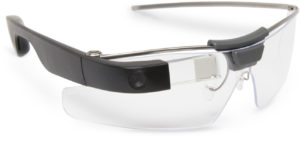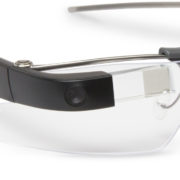Virtual Reality, Augmented Reality, Real Reality
 Virtual reality and augmented reality are the darlings of the tech industry. Seemingly every company is interested, even though one of the most interested AR products, Google Glass, crashed and burned a few years ago.
Virtual reality and augmented reality are the darlings of the tech industry. Seemingly every company is interested, even though one of the most interested AR products, Google Glass, crashed and burned a few years ago.
What’s the difference?
- Virtual reality (VR) is when you are totally immersed in a virtual world. You only see (and hear) what’s presented to you as part of that virtual world, generated by software and displayed in stereo goggles and headphones. The goggles can detect motion, and can let you move around in virtual world. Games and simulations take place in VR.
- Augmented reality (AR) means visual overlays. You see the real world, with digital information superimposed on it. Google Glass was AR. So, too, are apps where you aim your smartphone’s camera at the sky, and the AR software overlays the constellations on top of the stars, and shows where Saturn is right now. AR also can guide a doctor to a blood clot, or an emergency worker away from a hot wire, or a game player to a Pokemon character in a local park.
Both AR and VR have been around for decades, although the technology has become smaller and less expensive. There are consumer-oriented devices, such as the Oculus, and many professional systems. Drivers for the success of AR and VR are more powerful computing devices (such as smartphones and game consoles), and advances in both high-resolution displays and motion sensors for goggles.
That doesn’t mean that AR/VR are the next Facebook or Instagram, though both those companies are looking at AR/VR. According to a study, “VR/AR Innovation Report,” presented by the UBM Game Network, VR’s biggest failures include a lack of subsidized hardware enterprise applications, and native VR experiences. The gear is too expensive, developers say, and manufacturers are perceived to have failed in marketing VR systems and software.
Keep that airsick bag handy
It’s well known that if the VR hardware doesn’t work exactly right. If image motion is not properly synchronized to head motion, many VR users experience nausea. That’s not good. To quote from the UBM study:
Notably, we saw that many still feel like VR’s greatest unsolved problem is the high risk of causing nausea and physical discomfort.
“The biggest issue is definitely the lack of available ‘simulator sickness’ mitigation techniques,” opined one respondent. “Since each VR application offers a unique user experience, no one mitigation technique can service all applications. Future designs must consider the medium/genre they are developing for and continue to investigate new mitigation techniques to ensure optimal user enjoyment.”
Lots of good applications
That doesn’t mean that VR and AR are worthless. Pokemon Go, which was a hit a few summers ago, demonstrated that AR can engage consumers without stereo goggles. Google Earth VR provides immersive mapping experiences.
The hardware is also moving forward. A startup in Helsinki, called Varjo, made a breakthrough in optimizing goggles for AR and VR. They are addressing the challenge that if you make the resolution low on the goggles so that you can refresh the image quickly, it doesn’t look realistic. But if you increase the resolution to match that of the human eye, it’s harder to drive the image seamlessly in real time.
Varjo’s answer is to see where the eye is looking – using a technology called gaze tracking – and seamlessly drive that part of the display in super-high resolution. Where you’re not looking? That can be at a lower resolution, to provide context. Varjo says they can shift the high-resolution spot as fast as you can move your eye – and by tracking the gaze on both eyes, they can see if you are looking at virtual objects “close” or “far away.” The result, Varjo claims, is a display that’s about 35x higher resolution than other commercial systems, without nausea.
Varjo is focusing on the professional marketing with headsets that will cost thousands (not hundreds) of dollars when they ship at the end of 2017. However, it shows the promise of realistic, affordable AR/VR technology. Augmented reality and virtual reality are becoming more real every day.



